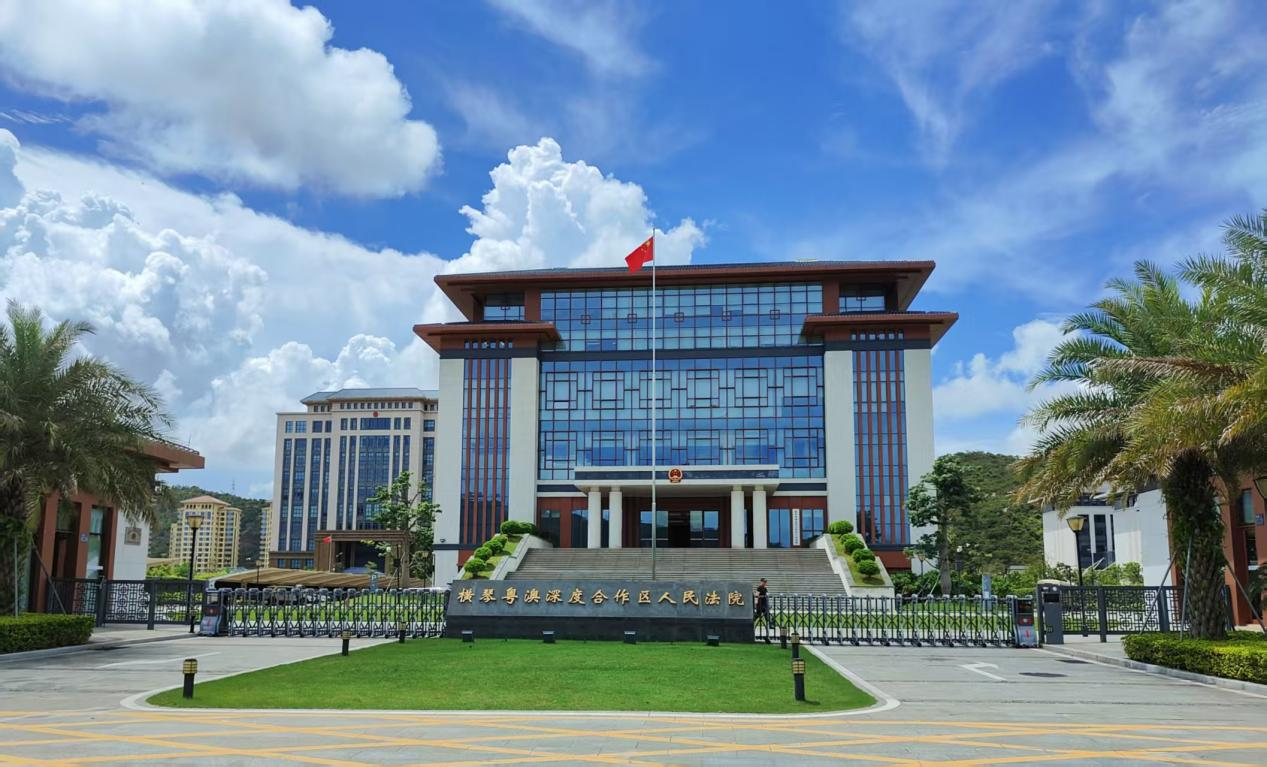港澳新视界|澳门法律制度介绍(四)——公司法律制度及商事案件对读
Published:
2025-07-21
作为澳门商法体系的核心组成部分,《澳门商法典》对公司制度的规范既延续了大陆法系的传统框架,又结合本地经济特点形成了独特规则。本文将系统梳理《澳门商法典》中公司的类型划分、设立要件、治理结构、股东权利及跨境事务处理等核心内容,通过法规解读与实务对读案例,解析澳门公司制度的运作逻辑及与内地公司法的差异,为跨境投资主体提供法律指引。
Introduction to the Legal System of Macao (Ⅳ) -Company Legal System and Comparison of Commercial Cases
作为澳门商法体系的核心组成部分,《澳门商法典》对公司制度的规范既延续了大陆法系的传统框架,又结合本地经济特点形成了独特规则。本文将系统梳理《澳门商法典》中公司的类型划分、设立要件、治理结构、股东权利及跨境事务处理等核心内容,通过法规解读与实务对读案例,解析澳门公司制度的运作逻辑及与内地公司法的差异,为跨境投资主体提供法律指引。
As a core component of the Macao commercial law system, the Macao Commercial Code not only continues the traditional framework of the mainland legal system in regulating the corporate system, but also combines local economic characteristics to form unique rules. This article will systematically sort out the core contents of the Macao Commercial Code, including the classification of company types, establishment requirements, governance structure, shareholder rights, and cross-border affairs handling. Through regulatory interpretation and comparison of practical case studies, it will analyze the operational logic of Macao's company system and its differences from mainland China's company law, providing legal guidance for cross-border investment entities.

(澳门黑沙滩 摄影:李哲凡律师)
一、公司的法定类型及设立要件
Ⅰ. Legal type and establishment requirements of the company
《澳门商法典》第二卷第一编 "公司" 将公司分为五种法定类型,每种类型的设立条件、股东责任及适用场景各有不同。
The first part of Volume 2 of the Macao Commercial Code, titled "Companies," categorizes companies into five legal types, each with different conditions for establishment, shareholder liability, and applicable scenarios.
无限公司由两名以上股东组成,股东对公司债务承担无限连带责任,《澳门商法典》第331条对此有明确规定,其设立需满足股东应为自然人(不得为法人)、章程需载明股东姓名、出资方式及经营范围、无需最低注册资本但需在章程中明确各股东的出资比例,此类公司适合家族企业或小型合伙经营,因责任风险较高,实践中数量较少。
An unlimited company is composed of two or more shareholders, who bear unlimited joint and several liability for the company's debts. Article 331 of the Macao Commercial Code clearly stipulates that its establishment must meet the requirements that the shareholders should be natural persons (not legal persons), the articles of association must specify the names, methods of contribution, and scope of operation of the shareholders, and there is no minimum registered capital required, but the proportion of each shareholder's contribution must be clearly stated in the articles of association. Such companies are suitable for family businesses or small partnerships, but due to the high risk of liability, the number is relatively small in practice.
有限公司是澳门最常见的公司形式,《澳门商法典》第356-392条对其规定最为详尽,其核心特征包括股东人数为1-30人(允许一人公司),最低注册资本为25,000澳门元,资本可分期缴纳(首次出资不低于25%);章程需载明公司名称、住所、经营范围、股东出资额及利润分配方式,章程变更需经股东会决议并登记;股东以出资额为限承担责任,公司人格独立于股东。
Limited liability company is the most common form of company in Macao, with detailed provisions in Articles 356-392 of the Macao Commercial Code. Its core features include a shareholder size of 1-30 (allowing one person company), a minimum registered capital of MOP 25000, and capital that can be paid in installments (with initial capital contribution not less than 25%); The articles of association shall specify the company name, address, business scope, shareholder contributions, and profit distribution method. Any changes to the articles of association shall be approved and registered by the shareholders' meeting; Shareholders are liable up to the amount of their capital contributions, and the company's personality is independent of shareholders.
两合公司由无限责任股东与有限责任股东共同组成,《澳门商法典》第348条对其有相关规定,其特点为无限责任股东负责公司经营,承担无限连带责任,有限责任股东仅以出资为限承担责任,无权参与经营,设立程序与无限公司类似,但章程需明确股东类型及责任划分,此类公司多见于风险投资领域,平衡管理能力与投资风险。
The joint liability company is composed of unlimited liability shareholders and limited liability shareholders. Article 348 of the Macao Commercial Code has relevant provisions on it. Its characteristics are that the unlimited liability shareholders are responsible for the company's operation and bear unlimited joint and several liability, while the limited liability shareholders are only responsible for their capital contributions and have no right to participate in the operation. The establishment procedure is similar to that of an unlimited company, but the articles of association need to clarify the types of shareholders and the division of responsibilities. Such companies are mostly found in the field of venture capital, balancing management capabilities and investment risks.
股份有限公司适用于大型企业,《澳门商法典》第393-488条规定其核心要素,包括注册资本最低为100万澳门元,股份可自由转让,分为记名股与无记名股;设立方式可由发起人设立(发起人不少于 3 人)或公开招股设立,招股需经澳门金融管理局批准;治理结构必须设立股东会、董事会及监事会,三会职权划分明确,董事会为执行机构。
A limited liability company is applicable to large enterprises, and Articles 393-488 of the Macao Commercial Code stipulate its core elements, including a minimum registered capital of MOP 1 million, freely transferable shares, and divided into registered shares and bearer shares; The establishment method can be established by the initiators (not less than 3 initiators) or through public offering, which requires approval from the Macao Monetary Authority; The governance structure must establish a shareholders' meeting, a board of directors, and a supervisory board, with clear division of powers among the three committees, and the board of directors as the executive body.
经济利益集团由两个以上独立企业为实现共同经济目标组成的联合体,《澳门商法典》第489条对其有规定,其特征为不具备法人资格,各成员保持独立法律地位,需签订集团协议,明确成员权利义务及合作范围,设立及变更需登记,但无需注册资本。
An economic interest group is a consortium formed by two or more independent enterprises to achieve common economic goals. Article 489 of the Macao Commercial Code stipulates that it does not have legal personality, and each member maintains independent legal status. A group agreement must be signed to clarify the rights, obligations, and scope of cooperation of the members. Its establishment and changes need to be registered, but no registered capital is required.

(澳门大学 摄影:李哲凡律师)
二、公司的组织结构与运作机制
Ⅱ. Organizational structure and operational mechanism of the company
《澳门商法典》对公司治理结构的规定体现权力制衡原则,不同类型公司的组织架构存在差异,其中有限公司与股份有限公司的规定最为典型。股东会作为公司最高权力机构,职权包括修改章程、选举董事、审议财务报告等,有限公司股东会每年至少召开一次,特别决议(如章程修改)需经代表 2/3 以上表决权的股东通过(《澳门商法典》第382条);股份有限公司除年度大会外,可召开临时大会,决议分为普通决议(简单多数)和特别决议(2/3 以上表决权),优先股股东在特定事项上享有表决权。
The provisions of the Macao Commercial Code on corporate governance structure reflect the principle of checks and balances of power, and there are differences in the organizational structure of different types of companies, among which the provisions for limited liability companies and joint-stock limited liability companies are the most typical. The shareholders' meeting, as the highest authority of the company, has powers including amending the articles of association, electing directors, and reviewing financial reports. The shareholders' meeting of a limited company shall be held at least once a year, and special resolutions (such as amending the articles of association) shall be passed by shareholders representing more than two-thirds of the voting rights (Article 382 of the Macao Commercial Code); Except for the annual general meeting, a limited liability company may convene an extraordinary general meeting, with resolutions divided into ordinary resolutions (simple majority) and special resolutions (with more than 2/3 of the voting rights). Preferred shareholders have voting rights on specific matters.
董事与董事会负责公司日常经营管理,其职权由章程规定或股东会授予,有限公司可设1名执行董事或3-12名董事组成董事会,董事任期不超过3年;股份有限公司董事会成员不少于3人,任期4年,董事长由董事会选举产生,代表公司对外行事;董事对公司负有忠实义务,若因故意或重大过失致公司损失,需承担赔偿责任(《澳门商法典》第245条)。
Directors and the board of directors are responsible for the daily operation and management of the company, and their powers are stipulated in the articles of association or granted by the shareholders' meeting. Limited companies may have one executive director or a board of directors consisting of 3-12 directors, with a term of office not exceeding 3 years; The board of directors of a limited liability company shall have no less than 3 members, with a term of 4 years. The chairman shall be elected by the board of directors and act on behalf of the company externally; Directors have a duty of loyalty to the company and are liable for compensation if the company suffers losses due to intentional or gross negligence (Article 245 of the Macao Commercial Code).
监事会监督公司财务及董事行为,其设置因公司类型而异,有限公司可不设监事会,仅设1名监察人;股份有限公司必须设立监事会,成员不少于3人,由股东会选举产生,任期4年,可列席董事会会议并提出质询。
The supervisory board supervises the company's finance and director behavior, and its establishment varies depending on the type of company. Limited companies may not have a supervisory board and only have one supervisor; A limited liability company must establish a supervisory board consisting of no less than 3 members, elected by the shareholders' meeting for a term of 4 years. The board of directors may attend board meetings and raise questions.
《澳门商法典》第214条规定,以下公司必须设立秘书:股东超过10人的公司;发行债券的公司;股份有限公司;资本、资产负债表金额或收入超过法定限额的公司。秘书职责包括会议记录签署、文件保管及合规审查,其证明文件具有法律效力(《澳门商法典》第238 条)。
Article 214 of the Macao Commercial Code stipulates that the following companies must establish a secretary: companies with more than 10 shareholders; Companies that issue bonds; limited company; Companies with capital, balance sheet amounts, or revenue exceeding legal limits. The duties of a secretary include signing meeting minutes, keeping documents, and conducting compliance reviews, and their certification documents have legal effect (Article 238 of the Macao Commercial Code).
经理由董事会聘任,负责具体经营事务,其权限需以书面形式明确(如签署合同的金额上限)。
The manager is appointed by the board of directors and is responsible for specific business affairs. Their authority must be clearly defined in writing (such as the upper limit of the amount of the contract signed).
三、股东权利与义务
Ⅲ. Shareholders' Rights and Obligations
《澳门商法典》对股东权利的保护贯穿公司存续全周期,同时明确股东的法定义务。
The protection of shareholder rights in the Macao Commercial Code runs through the entire life cycle of a company, while clarifying the legal obligations of shareholders.
股东的核心权利包括:盈余分享权(按出资比例分配利润,章程可设定最低分派比例)、决策参与权(通过股东会表决重大事项如章程修改、合并解散等)、资讯权(查阅公司簿册、账目及要求管理报告)、监督与追责权(选举或解任管理层、提起责任诉讼及请求司法检查)以及特定情形下的优先认股权和退出权(如章程修改损害权益时可要求合理补偿)。
The core rights of shareholders include: the right to share profits (distribute profits according to the proportion of capital contribution, and the articles of association may set a minimum distribution ratio), the right to participate in decision-making (vote on major matters such as amendments to the articles of association, mergers and dissolution through shareholder meetings), the right to information (access company books, accounts, and request management reports), the right to supervision and accountability (elect or dismiss management, file liability lawsuits, and request judicial inspections), and the right to pre emptive rights and exit in specific circumstances (such as requesting reasonable compensation when the articles of association are amended to damage rights and interests).
股东的核心义务则包括:足额缴付出资(现金或非现金,迟延需承担利息及连带责任)、分担亏损(按出资比例)、遵守竞业限制(未经许可不得从事竞争业务)、服从有效股东会决议,并在特殊情况下承担加重责任(如无限公司股东对公司债务负无限连带责任;控权股东滥用控制权损害公司时需赔偿;一人有限公司股东与公司的交易需书面形式且符合公司利益)。
The core obligations of shareholders include: full payment of capital contributions (in cash or non cash, with interest and joint liability for delay), sharing of losses (in proportion to capital contribution), compliance with non compete restrictions (not allowed to engage in competitive business without permission), compliance with effective shareholder meeting resolutions, and assuming increased liability in special circumstances (such as unlimited joint and several liability of unlimited company shareholders for company debts; compensation for controlling shareholders' abuse of control to damage the company; written transactions between one person limited company shareholders and the company that are in line with the company's interests).
此外,公司解散后股东须在分割财产范围内对未清偿债务负责,破产时单一股东可能承担无限责任,且出资移转后原股东仍对未缴股款负连带责任。股东权利可通过司法程序保护,但特别权利(如优先股)的剥夺需经类别股东会特别决议,具体权利义务还受公司章程约束。
In addition, after the dissolution of the company, shareholders shall be responsible for the outstanding debts within the scope of dividing the property. In the event of bankruptcy, a single shareholder may bear unlimited liability, and the original shareholder shall still be jointly and severally liable for the unpaid share capital after the capital transfer. Shareholders' rights can be protected through judicial procedures, but the deprivation of special rights (such as preferred shares) requires a special resolution of the class shareholders' meeting, and specific rights and obligations are also subject to the company's articles of association.
四、公司的变更与终止
Ⅳ. Change and Termination of the Company
公司变更涵盖组织形式变更、合并与分立、资本变动三类情形,其中组织形式变更允许公司在登记后转换类型(如无限公司转为有限公司),但禁止在未缴足出资或资产净值低于资本额等情形下进行,需经股东会决议(涉及股东责任加重或权利取消时需受影响股东同意),反对变更的股东可退出并获出资价值补偿。
Company changes cover three types of situations: organizational form changes, mergers and divisions, and capital changes. Among them, organizational form changes allow the company to change its type after registration (such as converting from an unlimited company to a limited company), but are prohibited from being carried out in situations where the capital has not been fully paid or the net asset value is lower than the capital amount. It requires a resolution of the shareholders' meeting (the consent of the affected shareholders is required in cases of increased shareholder liability or cancellation of rights). Shareholders who oppose the change may withdraw and receive compensation for the value of their capital contributions.
合并包括吸收合并与新设合并,分立包括简单分立、解散分立及分立合并,二者均需编制计划并经股东会特别决议,保障债权人异议权(30日内可要求清偿或担保),登记后权利义务自动转移。
Merger includes absorption merger and new establishment merger, while separation includes simple separation, dissolution separation, and separation merger. Both require the preparation of a plan and a special resolution of the shareholders' meeting to safeguard the objection rights of creditors (who can demand repayment or guarantee within 30 days). After registration, rights and obligations will automatically transfer.
资本变动中,增资可通过新出资或公积金转入(未缴足原资本前不得增资),减资需满足资产净值要求并保障债权人权益,资产净值低于资本半数时股东须注资否则公司解散。公司终止始于解散,事由包括股东决议、存续期满、长期未经营、所营事业异常、破产及法院裁判等,终止后进入清算程序,由原行政管理机关成员担任清算人,按 “清算费用→职工薪酬→税款→普通债务” 顺序清偿,资本不足时无限责任股东承担连带责任,剩余财产先返还股东出资再按盈余比例分配,清算完结并登记后公司消灭,未清偿债务由前股东在分割财产范围内承担补充责任(时效5年)。
In capital changes, capital increase can be made through new contributions or transfer from the reserve fund (capital increase is not allowed before the original capital is fully paid). Capital reduction must meet the requirements of net asset value and protect the rights and interests of creditors. When the net asset value is less than half of the capital, shareholders must inject capital, otherwise the company will dissolve. The termination of the company begins with dissolution, and the reasons include shareholder resolutions, expiration of the existence period, long-term non operation, abnormal business operations, bankruptcy, and court judgments. After termination, the company enters the liquidation process, and members of the original administrative management agency serve as liquidators to repay in the order of "liquidation expenses → employee compensation → taxes → ordinary debts". When the capital is insufficient, unlimited liability shareholders assume joint and several liability, and the remaining property is first returned to shareholders for capital contribution and then distributed according to the proportion of surplus. After the liquidation is completed and registered, the company is extinguished, and the outstanding debts are supplemented by the former shareholders within the scope of property division (time limit of 5 years).
特殊情形下,一人公司股东未及时补足人数或变更组织形式的强制解散,检察院可申请违法公司的司法清算。整体制度体现程序刚性(需登记公示)、债权人优先(享有异议权与清偿优先权)、责任延续(股东及清算人对不当行为负连带责任)及司法监督(检察院与法院介入违法情形)的特点,既保障公司结构调整灵活性,又通过严格程序维护市场秩序与交易安全。
In special circumstances, if a company's shareholders fail to timely supplement the number of shareholders or change the organizational form for forced dissolution, the procuratorate may apply for judicial liquidation of the illegal company. The overall system embodies the characteristics of procedural rigidity (requiring registration and public disclosure), creditor priority (enjoying the right of objection and repayment priority), liability continuity (shareholders and liquidators bear joint and several liability for improper behavior), and judicial supervision (procuratorate and court intervention in illegal situations), which not only ensures the flexibility of company structure adjustment, but also maintains market order and transaction safety through strict procedures.
五、商事对读案例
Ⅴ. Commercial Comparison Cases
珠海市中级人民法院自2022年以来已发布过四批“一案两答:珠澳民商事对读案例”。该院选取内地法院及澳门法院的真实裁判案例进行对读,对案件在两地的法律适用及裁判结果进行分析,具有极强的借鉴作用。本文转载其中三个典型商事案件,以供参考。
Since 2022, Zhuhai Intermediate People's Court has issued four batches of "two answers to one case: civil and comparison of commercial cases between Zhuhai and Macao". The Court has selected real judgment cases from mainland courts and Macao courts for comparative reading, and has a strong reference role in analyzing the application of law and the results of judgments in both places. This article reprints three typical commercial cases for reference.

(珠海市中级人民法院 摄影:李哲凡)
(一)甲诉请乙公司股东在公司减资决议前未出资范围内对乙公司债务承担补充赔偿责任案
(1) A sues B company's shareholders to bear supplementary compensation liability for B company's debts within the scope of their failure to contribute before the company's capital reduction resolution
基本案情:甲为乙公司的债权人。乙公司共有四名股东,乙公司章程载明股东认缴出资于2067年12月31日前缴足,四股东均未实缴出资。2022年6月,乙公司召开股东会并形成决议将公司注册资本由800万元减少至50万元,但未通知债权人甲。甲根据另案生效判决申请法院强制执行乙公司的财产,法院未发现乙公司有可供执行财产,于2023年2月裁定终结本次执行程序。甲遂向法院诉请四股东分别在乙公司减资前各自未出资范围内承担补充赔偿责任。四股东辩称其已在相关报纸公告减资情况,减资程序合法,无需承担责任。
Basic case: A is a creditor of Company B. Company B has four shareholders, and its articles of association state that the subscribed capital of the shareholders shall be fully paid before December 31, 2067. None of the four shareholders have actually paid their capital. In June 2022, Company B held a shareholders' meeting and formed a resolution to reduce the registered capital of the company from 8 million yuan to 500000 yuan, but did not notify creditor A. According to the effective judgment of another case, Party A applied to the court for compulsory execution of Party B's property. The court did not find any enforceable property of Party B and ruled to terminate the execution procedure in February 2023. A then filed a lawsuit with the court, requesting that each of the four shareholders bear supplementary compensation liability within the scope of their respective non capital contributions before the capital reduction of Company B. The four shareholders argued that they had already announced the capital reduction in relevant newspapers, and the capital reduction procedure was legal, so they did not need to bear any responsibility.
内地法院裁判结果:珠海市中级人民法院二审生效判决认为,首先,虽然乙公司章程载明股东认缴出资于2067年12月31日前缴足,股东享有期限利益,但因乙公司作为被执行人的案件在人民法院穷尽执行措施后无财产可供执行,四股东的认缴出资期限应加速到期。公司债权人甲有权请求未届出资期限的四股东在未出资范围内对公司不能清偿的债务承担补充赔偿责任。其次,根据《公司法》规定,公司应当自作出减少注册资本决议之日起10日内通知债权人,并于30日内在报纸上公告。乙公司在股东会作出减资决议后未通知债权人甲,乙公司减资行为不符合法定程序,客观上导致乙公司的偿付能力降低。乙公司减资为股东会决议结果,系四股东共同意志体现,故四股东应分别在乙公司减资前各自未出资范围内对乙公司不能清偿的债务承担补充赔偿责任。
The judgment result of the mainland court: Zhuhai Intermediate People's Court's second instance effective judgment holds that, firstly, although the articles of association of Company B state that the subscribed capital of the shareholders shall be fully paid before December 31, 2067, and the shareholders shall enjoy the benefits of the deadline, the deadline for the subscribed capital of the four shareholders should be accelerated because Company B, as the executed party, has no property available for execution after the people's court has exhausted all enforcement measures. Company creditor A has the right to request the four shareholders who have not yet reached the deadline for capital contribution to bear supplementary compensation liability for the debts that the company cannot repay within the scope of non contribution. Secondly, according to the Company Law, the company shall notify creditors within 10 days from the date of making the resolution to reduce registered capital, and publish an announcement in newspapers within 30 days. Company B failed to notify creditor A after the shareholders' meeting made a capital reduction resolution, which is in violation of legal procedures and objectively leads to a decrease in Company B's solvency. The reduction of capital by Company B is the result of a resolution passed by the shareholders' meeting, which reflects the joint will of the four shareholders. Therefore, each of the four shareholders should bear the supplementary compensation responsibility for the debts that Company B cannot repay within their respective non contributed scope before the reduction of capital.
澳门法律适用分析:本案的核心问题有二:一是公司股东是否应当对未缴付出资范围内的公司债务承担补充责任;二是公司减资决议及程序的作出是否需要通知公司债权人。关于第一个问题。首先,《澳门商法典》第361条第1款和第2款、第409条第1款和第2款对股东须即时缴付出资的最低比例和允许延迟缴付出资的最长期限作出了要求,分别为3年和5年,不可能出现本案“股东认缴出资额在2067年12月31日前缴足,乙公司股东丙、丁等未实缴出资”的情况。其次,根据澳门法,公司的债权人能否跳过公司行使对股东出资的权利与公司对股东的债权是否已经具有可请求性有关。根据《澳门商法典》第205条规定,如果股东被允许延迟缴付出资,而期间尚未届满,即“在可请求出资前”的情况,也即本案中的情况,则仅当对债权人实现其权利属必要的前提下,债权人可透过法院促使股东缴付出资。这并非令股东承担补充责任,而是促使股东提前向公司作出履行,以充实公司的财产,进而方便公司债权人针对公司实现其债权。同时需注意,公司债权人的这一权利以“必需”为前提和限度,假如公司自身财产仍然充足,公司债权人不能行使这一权利。关于第二个问题,在减资时澳门法主要是通过向债权人提供担保和限制向股东作出给付的机制对债权人进行保护。《澳门商法典》第266条规定,减少公司资本之决议,应予以登记及公布。第268条规定,公布决议时应通知债权人享有在决议公布后30日内要求提供担保的权利;基于减资对股东所作之给付,仅自减资决议公布之日起60日后且在偿付债权人或对要求担保之债权人提供担保后方得为之。
Analysis of the Application of Macao Law: There are two core issues in this case: firstly, whether the shareholders of the company should bear supplementary responsibility for the company's debts within the scope of unpaid capital contributions; Secondly, is it necessary to notify the company's creditors when making resolutions and procedures for capital reduction. Regarding the first question. Firstly, Article 361 (1) and (2), and Article 409 (1) and (2) of the Macao Commercial Code stipulate the minimum proportion of capital contributions that shareholders must pay immediately and the maximum period allowed for delayed payment of capital contributions, which are 3 years and 5 years respectively. It is impossible for the situation in this case where "shareholders' subscribed capital contributions are fully paid before December 31, 2067, and shareholders C and D of Company B have not actually paid their capital contributions". Secondly, according to Macao law, whether a company's creditors can bypass the company's exercise of the right to contribute capital to shareholders is related to whether the company's creditor's rights to shareholders are already claimable. According to Article 205 of the Macao Commercial Code, if a shareholder is allowed to delay the payment of capital contributions before the deadline, i.e. "before the request for capital contribution can be made", which is the case in this case, the creditor may only urge the shareholder to pay the capital contribution through the court if it is necessary for the creditor to realize its rights. This is not to impose supplementary responsibilities on shareholders, but to encourage them to fulfill their obligations to the company in advance, in order to enrich the company's assets and facilitate creditors to realize their claims against the company. At the same time, it should be noted that this right of the company's creditors is based on and limited to "necessity". If the company's own assets are still sufficient, the company's creditors cannot exercise this right. Regarding the second question, Macao law mainly protects creditors by providing guarantees and restricting payments to shareholders during capital reduction. Article 266 of the Macao Commercial Code stipulates that resolutions to reduce a company's capital shall be registered and published. Article 268 stipulates that creditors shall be notified of their right to request security within 30 days after the announcement of the resolution; The payment made to shareholders based on the reduction of capital can only be made 60 days after the announcement of the reduction resolution and after paying off creditors or providing guarantees to creditors who request guarantees.

(横琴粤澳深度合作区人民法院 摄影:李哲凡律师)
(二)甲诉请乙公司盈余分配案
(2) A sues B company for profit distribution
基本案情:甲、丙、丁、戊系有限责任公司乙公司的股东。丁、戊先后于2017年4月和7月与乙公司及其他股东签署《股份稀释协议》并退出公司,至此,乙公司股东为甲、丙,持股比例分别为40%、60%。甲根据乙公司财务提供的营业明细表统计出其2017年7月至2018年12月期间营业利润分红为102,332.2元,并向乙公司执行董事丙要求核对和分配上述金额,遭到丙拒绝。甲遂将乙公司诉至法院,请求分配盈余。乙公司辩称对该金额表示异议。
Basic facts: A, C, D, and E are shareholders of Company B, a limited liability company. D and E signed "Share Dilution Agreements" with Company B and other shareholders in April and July 2017, respectively, and withdrew from the company. As a result, Company B's shareholders are Company A and Company C, with shareholding ratios of 40% and 60%, respectively. According to the business statement provided by the finance department of Company B, Party A calculated that the operating profit dividend for the period from July 2017 to December 2018 was 102332.2 yuan. Party A requested to verify and distribute the above amount to Executive Director C of Company B, but was refused by C. A then sued Company B to the court, requesting the distribution of profits. Company B argues that it has objections to the amount.
内地法院裁判结果:横琴粤澳深度合作区人民法院一审生效判决认为,根据《公司法》(2018年修正)第166条、《最高人民法院关于适用<中华人民共和国公司法>若干问题的规定(四)》第15条的规定,股东盈余分配给付请求权的行使必须满足两个条件:一是公司必须存在盈余;二是盈余分配须由董事会提出方案,股东会决议通过。本案中,首先,没有证据证明乙公司已按照公司法要求缴纳税收、弥补以前年度亏损、提取法定公积金、任意公积金,而在弥补亏损和提取法定公积金之前,无法确认乙公司存在可分配利润。其次,虽然乙公司未设董事会,但甲未能证明乙公司就盈余分配召开股东会。据此,甲作为股东主张公司盈余分配理据不足,不予支持。
The judgment result of the mainland court: The first instance effective judgment of the People's Court of Hengqin Guangdong Macao Deep Cooperation Zone holds that according to Article 166 of the Company Law (2018 Amendment) and Article 15 of the Supreme People's Court's Provisions on Several Issues Concerning the Application of the Company Law of the People's Republic of China (IV), the exercise of the shareholder's right to request profit distribution and payment must meet two conditions: first, the company must have surplus; Secondly, the distribution of profits must be proposed by the board of directors and approved by the shareholders' meeting. In this case, firstly, there is no evidence to prove that Company B has paid taxes, made up for previous years' losses, withdrawn statutory reserves, or discretionary reserves in accordance with the requirements of the Company Law. Before making up for the losses and withdrawing statutory reserves, it cannot be confirmed that Company B has distributable profits. Secondly, although Company B does not have a board of directors, Company A has not been able to prove that Company B convened a shareholders' meeting for profit distribution. Based on this, as a shareholder, Party A's claim for the company's profit distribution lacks sufficient justification and cannot be supported.
澳门法律适用分析:本案核心问题是公司向股东分派盈余的前提条件。《澳门商法典》第198条第3款规定,有关营业年度之盈余,须首先弥补亏损,并在设立或重新设立法定公积金或章程规定之强制公积金后,方得分派,即以公司存在可分派盈余作为分派前提。《澳门商法典》第199条规定,未经股东议决,不得分派盈余。即公司须经股东会决议方可向股东分派盈余。本案中未见乙公司就是否分派及如何分派盈余召开股东会和作出决议,甲的分派盈余请求不成立。
Analysis of the Application of Macao Law: The core issue in this case is the prerequisite for the company to distribute profits to shareholders. Article 198 (3) of the Macao Commercial Code stipulates that profits for a business year must first make up for losses, and can only be distributed after the establishment or re establishment of a statutory provident fund or a mandatory provident fund as stipulated in the articles of association, with the existence of distributable profits as a prerequisite for distribution. Article 199 of the Macao Commercial Code stipulates that profits shall not be distributed without the resolution of shareholders. The company must obtain a resolution from the shareholders' meeting before distributing profits to shareholders. In this case, Company B did not convene a shareholders' meeting and make a resolution on whether to distribute and how to distribute profits. Therefore, Company A's request for profit distribution is not valid.
(三)甲诉请乙公司及股东丙变更股权登记案
(3) A sues B company and shareholder C to change their equity registration
基本案情:甲、丙、丁为有限责任公司乙公司的股东。三股东在公司章程中规定“股东之间可以相互转让其全部或部分股权”。2017年8月,甲与丙签订《股权转让协议》,约定甲将其所持有的乙公司10%的股权转让给丙,乙公司就案涉股权转让召开了股东会,但未形成股东会决议。经甲多次催促,乙公司迟迟未办理相关股权变更登记,故甲诉请法院判令乙公司、丙协助办理股权工商变更登记。乙公司、丙辩称因公司内部原因无法形成股东会决议,致使无法办理变更登记。
Basic facts: A, C, and D are shareholders of Company B, a limited liability company. The three shareholders stipulate in the company's articles of association that 'shareholders may transfer all or part of their equity to each other'. In August 2017, Party A and Party C signed a "Equity Transfer Agreement", which stipulated that Party A would transfer 10% of its equity in Company B to Party C. Company B held a shareholders' meeting regarding the equity transfer involved in the case, but no resolution was reached at the shareholders' meeting. After multiple reminders from Party A, Company B has yet to complete the relevant equity change registration. Therefore, Party A requests the court to order Company B and Party C to assist in handling the equity business change registration. Company B and Company C argued that due to internal reasons, they were unable to form a shareholder meeting resolution, which resulted in the inability to handle the change registration.
内地法院裁判结果:横琴粤澳深度合作区人民法院一审生效判决认为,《公司法》第71条规定,除公司章程对股权转让另有规定外,有限公司内部股东之间可以自由转让股权。据此,股东间转让股权无需股东会决议。本案中,案涉《股权转让协议》系公司内部股东之间的股权转让,且公司章程也规定“股东之间可以相互转让其全部或部分股权”。因此案涉股权转让无须经过股东会决议程序。在甲已将其10%的股权协议转让给丙后,乙公司及丙理应配合办理工商变更登记。甲的诉请理据充分,法院予以支持。
The judgment result of the mainland court: The first instance effective judgment of the People's Court of Hengqin Guangdong Macao Deep Cooperation Zone holds that Article 71 of the Company Law stipulates that, except for other provisions on equity transfer in the company's articles of association, internal shareholders of a limited company may freely transfer equity. Accordingly, the transfer of equity between shareholders does not require a resolution of the shareholders' meeting. In this case, the "Equity Transfer Agreement" involves the transfer of equity between internal shareholders of the company, and the company's articles of association also stipulate that "shareholders may transfer all or part of their equity to each other". Therefore, the transfer of equity involved in the case does not require the resolution procedure of the shareholders' meeting. After Party A has transferred its 10% equity agreement to Party C, Company B and Party C should cooperate in handling the business registration change. A's claim is well founded and supported by the court.
澳门法律适用分析:澳门法对有限公司的股权移转的规制十分宽松,《澳门商法典》第367条规定,除非在章程中设置相反规定,股东可以通过生前行为将其股权自由转让,包括转让给其他股东或者股东以外之人。本案中,乙公司的章程中没有对股权转让设置任何限制,相反亦规定“股东之间可以相互转让其全部或部分股权”,因此股东甲丙之间可以自由转让股权,而无须公司举行股东会来决定此事项。至于股权变更时的登记问题。《澳门商法典》第366条第1款规定,“股之生前移转须予以登记”,《澳门商业登记法典》第5条亦规定了有限责任股东股权的合并、分割及移转,是与法人商业企业主有关之事实亦须登记。可见,股权的移转,是一个与商业企业主有关的须登记之法律事实,乙公司和丙应配合办理登记。在办理商业登记时,无须提交股东会决议,因为证明须登记之法律事实发生的,是甲与丙之间的股权移转协议,而非乙公司的股东会决议。
Analysis of the Application of Macao Law: Macao law has very lenient regulations on the transfer of equity in limited companies. Article 367 of the Macao Commercial Code stipulates that unless there is a contrary provision in the articles of association, shareholders may freely transfer their equity through their lifetime actions, including transferring it to other shareholders or persons other than shareholders. In this case, the articles of association of Company B do not impose any restrictions on the transfer of equity, but instead stipulate that "shareholders may transfer all or part of their equity to each other". Therefore, shareholders A and C can freely transfer their equity without the need for the company to hold a shareholders' meeting to decide on this matter. As for the registration issue during equity changes. Article 366 (1) of the Macao Commercial Code stipulates that "the transfer of shares before their death must be registered", and Article 5 of the Macao Commercial Registration Code also stipulates that the merger, division, and transfer of limited liability shareholders' equity, which are facts related to corporate business owners, must also be registered. It can be seen that the transfer of equity is a legal fact related to the registration of commercial enterprise owners, and Company B and Company C should cooperate in handling the registration. When handling business registration, there is no need to submit a shareholder meeting resolution, as the legal fact that needs to be registered is the equity transfer agreement between Company A and Company C, not the shareholder meeting resolution of Company B.
(案例转载自珠海市中级人民法院公众号文章《珠海中院发布第四批“一案两答:珠澳民商事对读案例”》https://mp.weixin.qq.com/s/m8hZf8RgNATg3iuSmqhZ0g)
关键词:
相关新闻
2025-12-05
动态|众成清泰济南所岳冬雪律师获聘为济南市劳动人事争议仲裁委员会兼职仲裁员
2025-12-03
动态|众成清泰济南所篮球队出征济南市律师协会第七届律师篮球赛 首周豪取两连胜
2025-12-02
2025-11-27
2025-11-13

众成清泰济南区域



